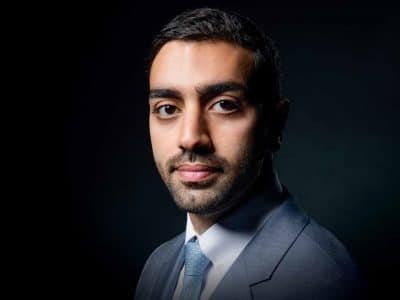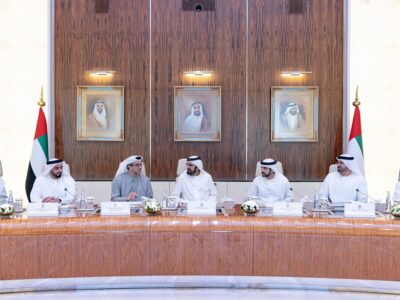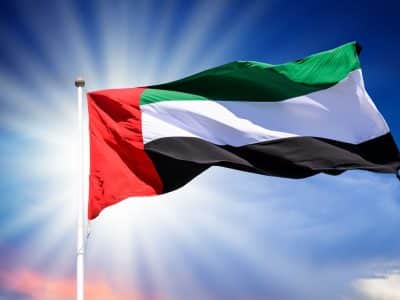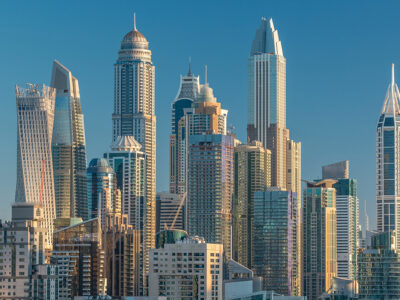As the global tourism sector looks forward to a post coronavirus recovery, one venture in Saudi Arabia could become a trailblazer for the industry for two important reasons: sustainability and space.
The Red Sea Development Company (TRSDC), developer behind the world’s most ambitious regenerative tourism project, has unveiled a striking vision for its main hub island at the destination Shurayrah.
John Pagano, CEO of TRSDC, expects guests to be awed by The Red Sea Project, which he calls a “truly immersive barefoot luxury experience”.Designed by Foster + Partners, the Coral Bloom takes inspiration from Saudi Arabia’s indigenous flora and fauna, while catering to a new generation of conscientious travellers.
How has the coronavirus impacted traveller expectations for holiday destinations?
While the pandemic has had a significant impact on the international tourism industry, worldwide vaccine rollouts provide a sense of optimism. At TRSDC, we are positive that once borders reopen, the international tourism industry will swiftly recover. We expect a strong resurgence in traveller confidence and interest in unique locations that have been developed responsibly, taking care of the natural environment.
Travellers are now looking for responsible travel policies, with sustainability being a key priority to help protect and promote a healthy environment. They want to pursue quality experiences, immerse themselves in the beauty of the local environment and engage in new cultures. With this desire to travel greener, it’s no longer enough for destinations to just be sustainable – they must provide meaningful experiences with regenerative tourism policies that still deliver exceptional luxury.
The coronavirus has impacted both the industry and traveller expectations, and our hotel designs reflect this. For instance, there will be no internal corridors in response to a growing demand for space and seclusion.
Our Coral Bloom concept, created by international architecture firm Foster + Partners, blends in with the island’s pristine natural environment. It will truly immerse guests in the natural beauty of the Red Sea, offering ground-breaking architecture and sustainable design that exceeds global traveller expectations.
What is the philosophy behind regenerative tourism?
For many generations, tourism was a disruptive force, negatively impacting locals’ well-being and the natural environment’s conservation status.At TRSDC we hope to lead the way to a new global standard of regenerative tourism. This stems from our belief that everyone has a responsibility to protect one of the world’s most important assets: the natural environment.
Regenerative tourism is the commitment to implement policies that contribute to sustaining and regenerating the environment over the long term. We have made great strides in achieving this aim with the destination, recently completing the first stage of our LEED for Cities platinum status.
We are committed to preserving and enhancing the natural and cultural assets at our destination, as well as the quality of life for local people. This is why the company has pledged to contribute a 30 percent net conservation benefit by 2040.
How does Coral Bloom fit Saudi Arabia’s broader rebrand as a tourism destination?
The kingdom’s Vision 2030 programme laid out a framework to diversify the economy with three main themes: a vibrant society, a thriving economy and an ambitious nation. Tourism is key to this vision, setting an ambitious target to usher in 100 million international visitors and offering an immersive experience steeped in the natural beauty and culture of the destination.
By current predictions, the contribution of tourism to Saudi Arabia’s GDP will be on par with the global average of 10 percent by 2030, compared to the just over 3 percent it contributes now. The Red Sea Project is one of the flagship tourism giga-projects currently under development in the kingdom and the destination will play a key role in this growth, contributing 100 billion riyals during the construction phases and 22 billion riyals a year once fully operational. Additionally, the destination will employ 70,000 in direct, indirect and induced roles.

Our Coral Bloom concept for Shurayrah Island, the gateway to the Red Sea Project, represents around 80 percent of the first phase, which will be completed in 2023. We want our guests to be awed when they arrive at the Red Sea Project as one of the first international luxury destination offerings to open in the kingdom.
What are some of the challenges behind The Red Sea Project’s commitment to setting new standards in sustainability, such as using 100 percent renewable energy?
Our commitment to set new standards in regenerative tourism requires a more complex way of working to ensure we are preserving and enhancing the natural environment. This is challenging, but something we will never falter on. We’re leaving 75 percent of our island archipelago untouched as part of our goal to achieve a 30 percent net conservation benefit over the next two decades. These bold ambitions are no mean feat for a project of this size.
We are set to be the world’s largest tourism destination powered solely by renewable energy 24-7, and this achievement is underpinned by the creation of the world’s largest battery storage system. The technology exists but what is usually lacking is the will to change from the business-as-usual model to one that actively invests in our natural capital.
We are developing a complex regulatory framework to facilitate our ambitious sustainability and regeneration commitments. It includes the regulation of fisheries, removal of invasive species in the area, conservation zones and the expansion of green and blue habitats to encourage regeneration and carbon sequestration.
Additionally, the project’s remote location and lack of basic infrastructure has posed challenges as we look to progress our development plans while protecting our natural environment. We’ve invested heavily in innovative construction methods such as off-site manufacturing, where we build units in a modular fashion off-site in Saudi Arabia or beyond before transporting them to the project site for final assembly.
This not only boosts efficiency and quality but also helps us reduce the number of people on the ground and the human impact on the natural environment. We’ve worked with our Saudi partner, AlKifah, to construct a precast panel manufacturing facility in the project area that will help localise jobs and greatly reduce our carbon footprint by avoiding approximately 10 million km of transportation.








